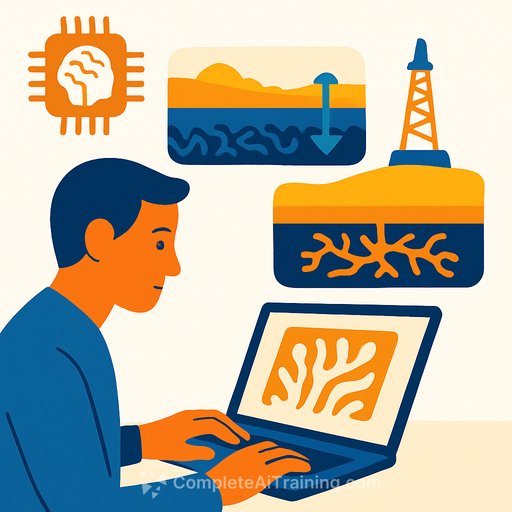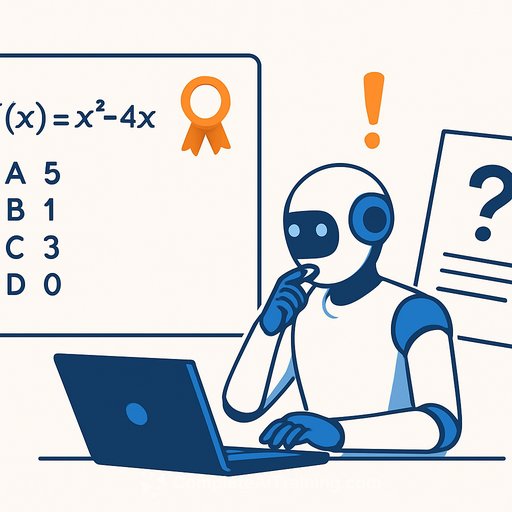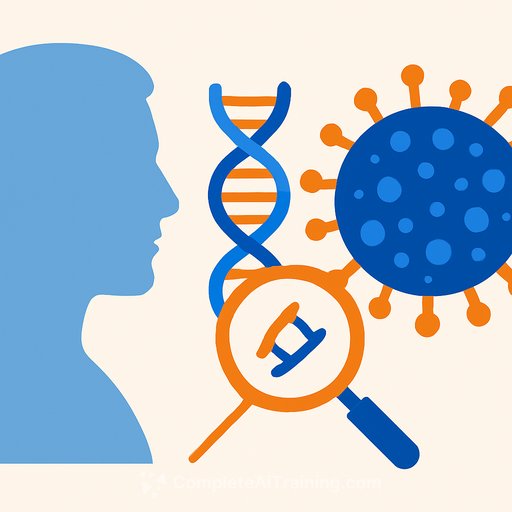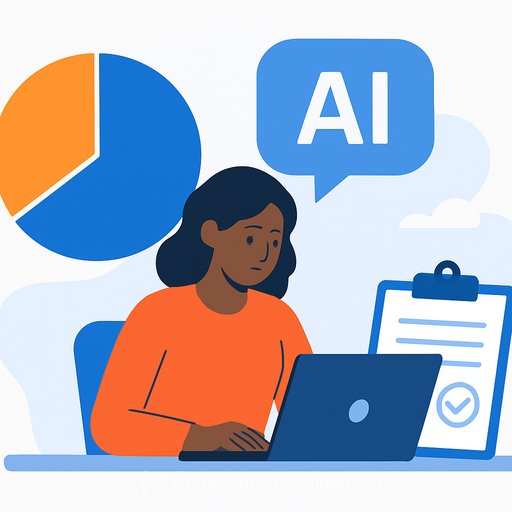AI Model Predicts Viscous Fingering with Speed and Precision
Cleaning groundwater, pushing oil through rock, or storing CO2 in subsurface formations all depend on how two fluids mix inside complex porous media. The trouble is a known antagonist: viscous fingering-thin, branching flow patterns that cause poor sweep efficiency and missed targets.
A team led by USC Viterbi associate professor Birendra Jha has built a deep learning framework that forecasts these patterns accurately and fast. The work, published in Physical Review Fluids, shows that AI can model multi-scale finger growth, splitting, merging, and coarsening while avoiding key numerical artifacts that burden conventional simulations.
Why viscous fingering still trips up industry
When a low-viscosity fluid displaces a higher-viscosity fluid through porous rock, the interface destabilizes into fingers. In practice, that means injected agents bypass contaminants, or water skates past oil, leaving valuable reserves behind. The physics is chaotic, nonlinear, and expensive to compute with fidelity.
Direct Numerical Simulation (DNS) can capture the details, but at a steep cost. "They can't really simulate it, because it requires so many computational resources to be able to resolve those fingers, which are so nonlinear and curved and complex," Jha said. "I remember one simulation for a 2011 paper. It took two months… which is just not acceptable in industry."
What the new model does differently
The approach combines two ideas: a spatial encoder and Koopman-based temporal dynamics.
- Spatial embedding via autoencoder. An autoencoder learns a compact representation of finger morphology. It compresses complex, multi-scale interfaces into a concise latent vector-think a reliable fingerprint for each flow state.
- Koopman operator for time evolution. Instead of wrestling with nonlinear state transitions directly, the model lifts dynamics into a space where they evolve linearly under a Koopman operator. That makes multi-step prediction stable and accurate, even as fingers split, merge, and coarsen. For background on the mathematics, see the Koopman operator.
Training took about an hour on two GPUs. After that, inference runs in the time it takes to issue a standard chatbot query-enabling rapid scenario testing that DNS struggles to deliver.
Accuracy without the usual numerical baggage
The team reports that the model meets DNS-level accuracy and, in some cases, corrects errors introduced by numerical schemes. "There is a region of less viscous fluid where we don't expect to see any presence of the more viscous fluid," Jha said. "In the traditional method, there will be patches where it will show up, and it's purely because of numerical error. In the proposed approach, we got rid of that error."
Beyond interface shape, the framework accurately predicts multiple metrics central to mixing and sweep efficiency. That includes the timing and frequency of finger splitting, merging behavior, and the coarsening trends that drive late-stage transport.
Where this lands for practitioners
- Groundwater remediation. Better placement and timing of injections to minimize bypassing and improve contact with contaminants.
- Enhanced oil recovery. Faster, more reliable forecasts of sweep efficiency under varying viscosity contrasts, rates, and heterogeneity.
- CO2 storage. Scenario screening to assess plume behavior under realistic rock and brine properties.
- Microfluidics and biopharma. Predictable displacement in tight channels when testing drugs against biofluids with different viscosities.
What you can use today
- Model integration. Use the trained AI as a surrogate for rapid "what-if" analyses. Reserve DNS for final validation on narrowed scenarios.
- Data strategy. Curate high-quality simulation or experimental datasets that capture the viscosity ratio, flow rate, and heterogeneity ranges you care about. Coverage matters more than sheer volume.
- Hardware. Two modern GPUs were sufficient for training in this study. Inference is lightweight and near-instant.
- Metrics first. Define the operational metrics (e.g., sweep efficiency, breakthrough time, mixing index) and verify the surrogate's accuracy on those, not just on visual interface match.
What's next from the research team
The group plans to extend training datasets to capture broader subsurface conditions and more realistic rock structures. That includes variable permeability fields and more complex boundary conditions, pushing the model toward field-scale relevance.
Bottom line: This AI framework brings high-fidelity viscous fingering forecasts to practical timelines, cuts down on numerical artifacts common in DNS, and opens a faster path to optimizing subsurface operations and microfluidic assays.
Published on September 30th, 2025
Last updated on September 30th, 2025
Want structured upskilling on the AI methods used here? Explore Complete AI Training - courses by job.
Your membership also unlocks:






